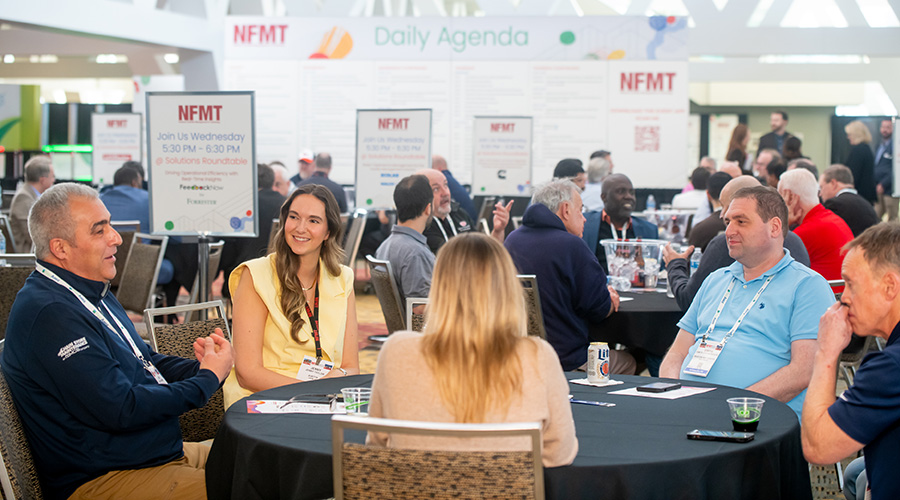 Clarence Carson was hired as the Chief Facilities Officer of Chicago Public Schools in May 2018. Kai Brown Photography
Clarence Carson was hired as the Chief Facilities Officer of Chicago Public Schools in May 2018. Kai Brown PhotographyHow Chicago Public Schools Responded to COVID-19
Clarence Carson helped lead a variety of initiatives during the pandemic -- including ventilation assessments and deep cleanings of all facilities. His leadership served as a model for other school districts during the pandemic.
March 6, 2020, is a day that Clarence Carson will never forget. It was the day the pandemic hit CPS, when a student at a special-needs school contracted COVID-19. After watching all of the initial drama over the coronavirus unfold in the U.S. on the west coast and cruise ships, the pandemic finally hit home. Carson and his team started cramming for what would happen next.
“We had to work quickly with the EPA and the CDC, as well as the Illinois Department of Public Health, and the Chicago Department of Public Health to understand what the issue was we were trying to identify,” he says. “It was a new viral issue. We thought it was airborne and also [spread on] surfaces as well, so we wanted to take the utmost precaution as possible.
“Students were very sensitive to these kinds of issues, of course, and since there were special-needs students, the risk was very high. We brought in a heightened level of cleaning and disinfection in the entire building.”
CPS moved to distance learning for all students on March 16. Carson’s team switched gears to focus on deep cleaning all of the CPS facilities, and preparing for a return of students and faculty that nobody knew when exactly would occur. The preparations also included retrofitting buildings to accommodate social distancing and adding sanitizing stations — a significant task with 1,300 buildings to address. They also distributed a staggering 1.2 million COVID-related signs.
CPS also hired a third-party consultant to conduct an indoor air quality (IAQ) assessment, as has been common at institutional and commercial facilities during the pandemic. Surveys have shown that IAQ ranks high on the list of building occupants’ priorities as buildings reopen.
“We did a ventilation assessment to figure out how our buildings breathe,” Carson says. “That looked at both natural ventilation and mechanical ventilation in all of our spaces. We made repairs based on those assessments so that when it came time to reopen, we would be ready in a safe environment.”
In addition to ensuring that the schools would be safe for reopening (which started in January this year), CPS schools also served as hubs for COVID testing and later as vaccinations for the city.
“We did drive-through testing in the parking lots, but when we started doing the vaccinations, they were inside the gyms,” Carson says. “We’d use large spaces to allow for proper social distancing and allowed for controlled egress in and out of the building.”
As the 2021-22 school year gets underway, CPS anticipates a full five-day return to in-person classes for students. With cases on the rise across the U.S. and the Delta variant of coronavirus wreaking havoc, that plan could change. But as of this printing, Carson says the plan is for students and staff to maintain 3-foot social distancing at schools, mandatory masks as per Illinois Gov. Pritzker’s mandate for the state’s public schools, and continued emphasis on hand washing and sanitizing.
“None of us have a crystal ball, and we’re all trying to do our best to take what we know today and project out conservatively for the safety of our students and staff and the inhabitants of our facilities,” Carson says.
Leading during COVID
The pandemic resulted in a lot of uncertainty in the country and around the world, and especially in the facilities management realm. The unprecedented pandemic raised a lot of questions locally and nationally among school districts.
To help answer some of these questions, Carson used his strong communication skills to organize meetings in his district to unite his team’s efforts and crowdsource solutions for fellow facility managers across the country.
Locally, Carson used the pandemic to ensure departments inside his team were all on the same page.
“One of the best parts of our strategy locally has been a real partnership between budget procurement and facilities,” he says. “We were able to create a weekly meeting and were able to meet two times a week where we reviewed the needs of the district and then were able to find the recommended manufacturers of products, test those products, review pricing, look at the overall logistics, and deliver to our end-users and schools quickly.”
This helped centralize the process for CPS, Carson says. Before COVID, individual schools in the district would purchase products separately, creating higher costs. With a centralized approach, CPS collaborated its money in a more effective way.
“It created a high-level of equity for our entire district,” he says. “We were not depending on certain schools that might have had lower funding to get their own product and their own resources. We had a very balanced, equitable approach to procuring resources for all of our schools throughout the entire pandemic.”
Nationally, Carson emerged as a major player in helping school districts get through the pandemic. As a member of the Council of the Great City Schools, Carson worked with other facility managers from the biggest school districts across the country to bounce ideas off of each other, discuss issues that came up during the pandemic, and provide a support group for everyone during the difficult times. Carson organized a group of managers that met remotely every Friday.
“Knowing the other guys, if they thought the meetings would have been a waste of time, they wouldn’t have done it,” says Bob Carlson, director of management services for the Council.
One of the participants was John Shea, the CEO of facilities and maintenance with the New York City Department of Education, who deals with many of the same challenges Carson faces in Chicago.
“Having contacts and relationships with colleagues across the country was critical to our COVID recovery and success,” says Shea. “The ability to share information, stories, successes, failures, concerns, and pretty much anything else was hugely helpful technically, and the ability to hear from our friends was absolutely emotionally supporting and inspiring.
“Some days were hard to get through, and knowing that other people were going through the same thing and understood your situation was helpful beyond words.”
It’s that mix of concern, compassion and smarts from Carson that caught Rivera’s eye in 2018, and the same traits that placed Carson at a PTA meeting with his daughter.
“One thing Clarence really brings to the role is not just the subject matter expertise, but the perspective as a parent,” Rivera says. “The work that he’s doing to make sure that buildings are warm, safe, and dry and ready to receive students, it’s not abstract in nature. He views the work through the lens of a parent, and I think that’s very evident in what he does and it helps him connect with the principals, teachers, and other stakeholders.”
Dave Lubach is the managing editor for the facility market team. He has six years of experience writing for the facility management industry.
Related Topics:













